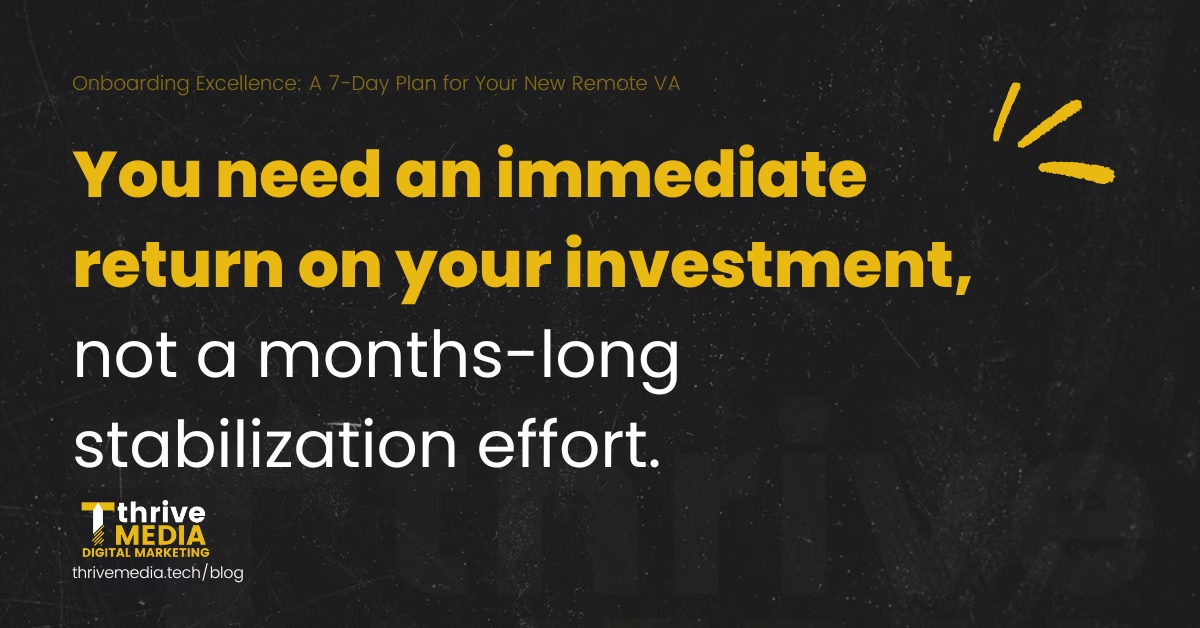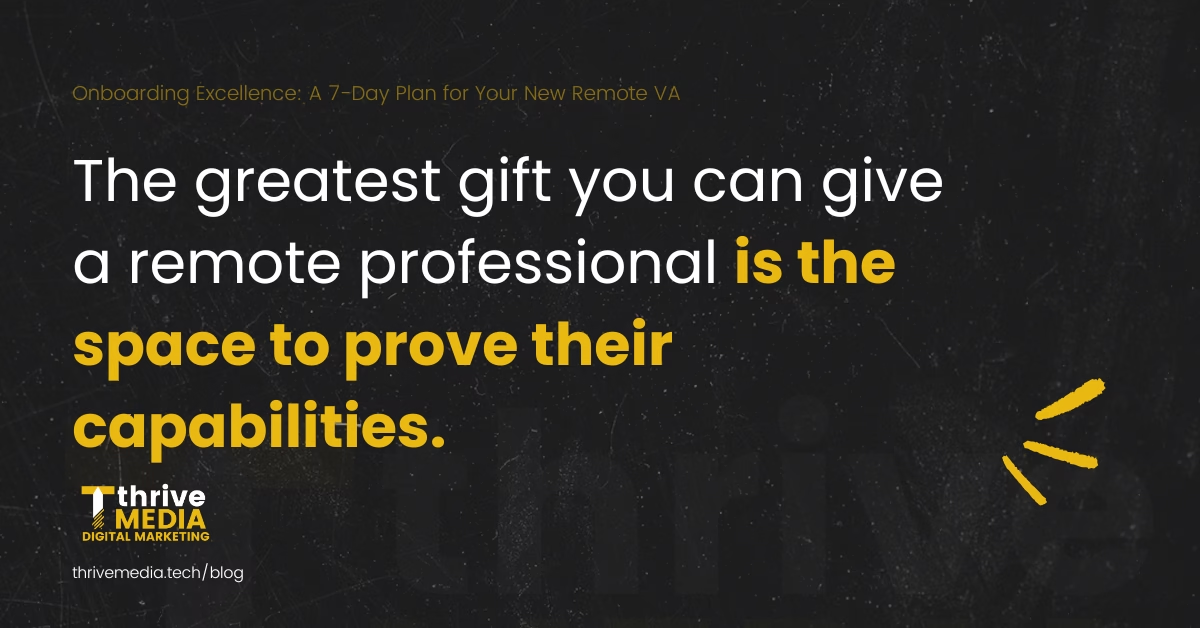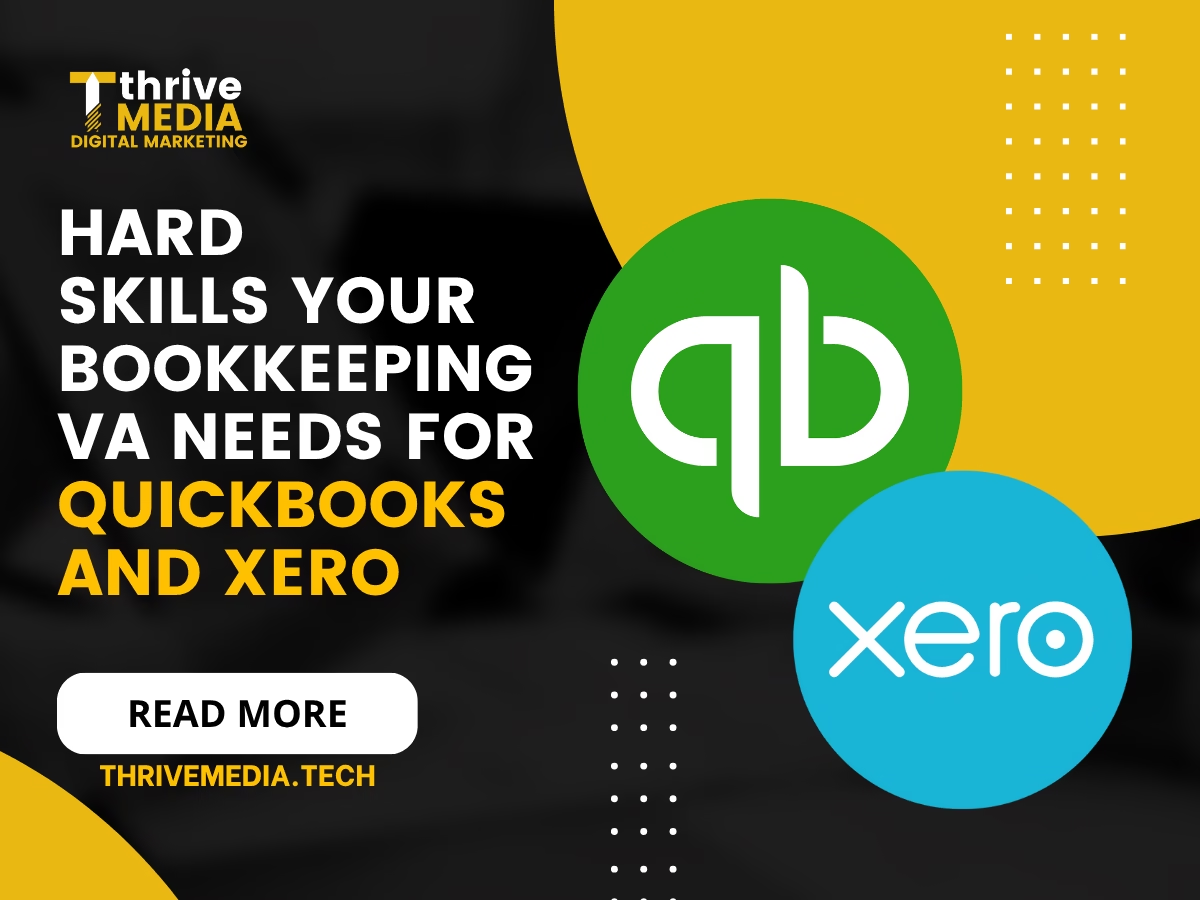Not all hires are instant.
You’ve done the hard part. You identified the gap in your operations, spent the time interviewing, and finally found that perfect, results-driven professional who can give you back hours in your day. Congratulations.
Now comes the moment where most businesses falter: the transfer of knowledge.
Too often, executive-level staff and business owners treat the remote team member like a plug-and-play solution. You toss them the keys to a few systems, explain a complex workflow in a 30-minute call, and then wonder why, two weeks later, they are still bogged down in a maze of permissions and confusing acronyms.
The result is frustrating for everyone. Your VA feels adrift, productivity stalls, and you find yourself spending more time managing the onboarding process than you saved by hiring them in the first place. You need an immediate return on your investment, not a months-long stabilization effort.
The solution isn’t a complex, 90-day marathon. It’s a structured, intensive 7-day remote VA onboarding plan designed for precision and immediate impact. This week-long process shifts the focus from “training” to “integration,” ensuring your new VA is not just aware of your processes, but functionally part of your engine room by the close of business next Friday.
Here is the strategic framework for transforming your new hire from a hopeful prospect into a high-impact team asset in just seven days.

Day 0: The Setup Sprint (Before They Log On)
Excellence in onboarding begins before the employee does. This preparation phase is the ultimate sign of respect for your new professional’s time and competence. Neglecting Day 0 instantly signals a lack of organizational readiness.
- The Tech Staging Area: Do not ask your VA to chase down software access. Create a single, secure document listing every required login, shared drive, Slack channel, and project management board. Test all links and passwords. This is not their task; it’s yours.
- The Welcome Kit: A personalized, short email detailing the first 24 hours (when to log in, whom to expect a message from, the agenda for Day 1). This eliminates the awkward “Do I just wait?” moment and provides immediate psychological stability.
- Tool Immersion: Pre-load a few short, key instructional videos or simple SOPs related to your core project management tool (e.g., how to log time, how to update a task card). This allows them to familiarize themselves with the environment on their own terms, reducing time spent on basic mechanics during the first week.
Day 1: Clarity of Mission and Connection
The first day is about context, not tasks. You are setting the strategic foundation for the partnership.
- The Strategic Brief (The Why): Don’t just explain what they are doing (e.g., “managing social media”). Explain why it matters (e.g., “Social engagement drives 40% of our pipeline, and your role directly influences our Q4 revenue goal.”) Connect their daily output to the company’s biggest wins. This is the StoryBrand framework in action: they are the hero helping the business succeed, not just an operator.
- The Human Connection: Schedule a 15-minute, non-work-related chat. Discuss something other than the job: a hobby, a weekend plan. This may sound like a soft skill, but for a remote team member, this early investment in rapport is critical for building trust and open communication, which will pay dividends when things inevitably become complex.
- The Systems Overview: Walk them through the map, not the territory. Introduce the ecosystem of tools (CRM, communication, project management) and explain how they connect. The goal is to understand the flow, not to master the input fields. Action Item: Assign a simple task to verify system access, like setting up their profile photo and notification preferences.
Day 2: Mapping the Landscape and The Hand-Off
Now is the time for process, documentation, and the transfer of procedural knowledge.
- The SOP Deep Dive: This is where you introduce the Standard Operating Procedures. If you don’t have them, consider this the time to create them collaboratively. Focus on the 20% of processes that yield 80% of the results. This is how you ensure successful remote professional onboarding.
- Communication Protocol: Define the rules of engagement.
- Urgent: Phone call/WhatsApp/SMS.
- Need a fast answer (within 1 hour): Slack/Teams DM.
- Non-urgent/FYI (within 1 day): Email or PM Tool comment.
- This clarity avoids the communication overload and anxiety common in new remote work relationships.
- The Shadow Brief: Introduce your VP to the team members they will be working with most closely. If your company leverages a structured remote team approach (like Thrive Media Tech’s VA Team model of Support VA, Production VA, and Project Manager), explain their role within that specific framework. Show them the structure so they know exactly who to ask for help on technical tasks versus strategic questions.

Day 3: The Observation and Calibration Run
The VA starts observing real work in a low-stakes environment.
- The “Look Over My Shoulder” Session: Have the VA sit in (virtually) on non-critical calls or watch recordings of recent team interactions. The goal is to absorb the tone, the jargon, and the pace of your business. How does the team handle an internal disagreement? What level of detail is required in a client report?
- Micro-Task Deployment: Assign one or two non-critical, easily measurable tasks that are 100% contained within the documented SOPs from Day 2. Examples:
- Cleanup a segment of your CRM contacts.
- Organize 10 recent files in the shared drive.
- Draft an internal memo following a template.
- End-of-Day Check-in: A quick 10-minute huddle. Focus the discussion on: “What was confusing?” and “What access are you still missing?” Not, “Did you finish the work?” This reinforces the commitment to seamless integration, not punitive micro-management.
Day 4: The First Solo Flight
Day 4 is about applying knowledge to a real, low-risk deliverable.
- The Defined Project: Assign a small, self-contained project that, if delayed or executed imperfectly, will not cause a catastrophe. This could be managing a simple, segmented email campaign or preparing the first draft of a standard weekly report. This is the test case for your streamlining remote team member integration.
- The Trust Test: Step back. Give clear parameters, a defined deadline, and then let them execute. Resist the urge to check in every hour. The greatest gift you can give a remote professional is the space to prove their capabilities.
- Peer-to-Peer Check-in: Ensure they check in with a non-managerial colleague or their assigned support person/Project Manager (if utilizing the VA Team model) for advice before the final submission. This builds internal support channels and reduces dependency solely on the business owner.
Day 5: Review, Refine, and Documentation
This is the most critical day for long-term momentum.
- The 45-Minute Structured Feedback Loop: Use a structured format:
- VA’s Self-Assessment (15 min): What went well? What was confusing? What process needs to be documented better?
- Manager’s Feedback (15 min): Focus on 1-2 positive notes and 1-2 areas for improvement (never more). Frame improvements as “adjustments to the process,” not “failures of the person.”
- Refinement/Action Plan (15 min): Document any new SOPs or revisions based on the feedback. The VA should be the one to update the documentation. This ensures they “own” the process.
- Service Alignment Discussion: Reiterate how their current tasks align with the company’s core services (e.g., if they are handling email lists, tie it back to the Digital Marketing Campaign services). This keeps their focus strategic.
- The Weekend Brief: Give them a light, preparatory brief for the following week, allowing them to think strategically over the weekend without the pressure of having to work.

Day 6 & 7: The Momentum and Scale Builder
The final two days shift from task execution to strategic, future-facing integration.
- Integration Challenge: Introduce a task that requires coordination with a second department or team member. For instance, drafting content that requires sign-off from the marketing lead and the sales director. This forces them to navigate the internal hierarchy and communication structures, an essential step in successful remote professional onboarding checklist completion.
- Future Planning Session: Look 30 days ahead. Discuss what their role will look like once the core tasks are stabilized. This shows a long-term commitment and harnesses their input, shifting their mindset from a temporary contractor to a valued, strategic partner.
- Tool Efficiency Audit: Ask your VA to suggest one small change to a system or process to make their job easier or faster. Because they are the newest user, their perspective on bottlenecks is the freshest. Acting on this input validates their expertise and builds immediate loyalty.
The Long-Term Return on a Short-Term Investment
Many organizations skip this intensive 7-day structure, believing they are saving time. In reality, they are merely deferring the cost. A messy, protracted onboarding process is expensive: it leads to task duplication, increased stress for the business owner, and a much higher likelihood of early attrition.
This 7-day remote VA onboarding plan is not simply a checklist; it is a declaration of operational excellence. It establishes three key organizational principles that executives and SMEs must embrace for remote success:
- Process Over Personality: A clearly documented SOP eliminates reliance on your VA’s guesswork and ensures a consistent quality of output. If the process is flawed, you fix the process, not the person.
- Specialization Drives Velocity: In a single-hire approach, VAs are often expected to be generalists. By utilizing a structured onboarding, you quickly identify and leverage their true specialization, which is why a team model, where dedicated support and project management already exist, often provides unparalleled efficiency. Your VA can move faster because they know exactly where their lane begins and ends.
- The Guide, Not the Hero: As the business owner, your role is not to perform the tasks, but to be the guide who successfully equips the hero (your VA) for the mission. This framework gives you a clear path for that guidance, allowing you to return to your primary function: focusing on the company’s vision and growth.
Your time is too valuable for daily tasks and certainly too valuable to waste on months of ineffective team integration. Implement this framework and move beyond the messy middle. The time to focus on strategic growth, leveraging your new high-impact team member, is now.
About Thrive Media
Thrive Media is a full service Digital Marketing and Virtual Assistance Business based in the Philippines. It is firmly rooted in its passion and vision to offer authentic support to businesses across the world. Rooted in humble beginnings, Thrive Media bring a hands-on approach to its service delivery, offering everything from Starter Business Packages to Websites, fully-managed Virtual Assistants and Virtual Teams.







